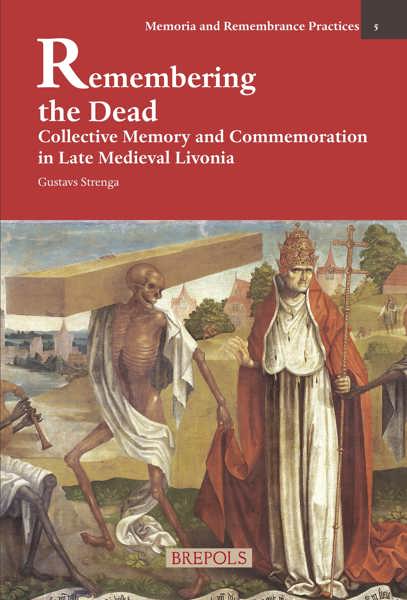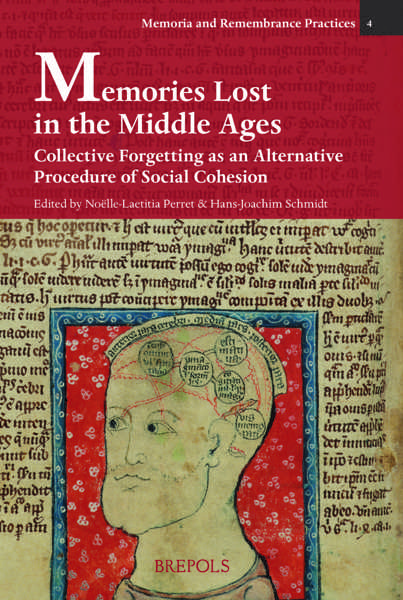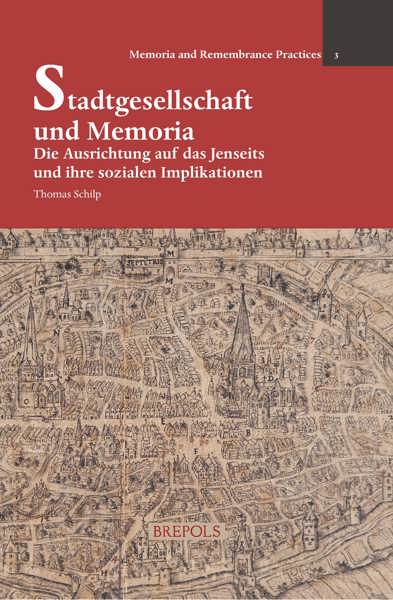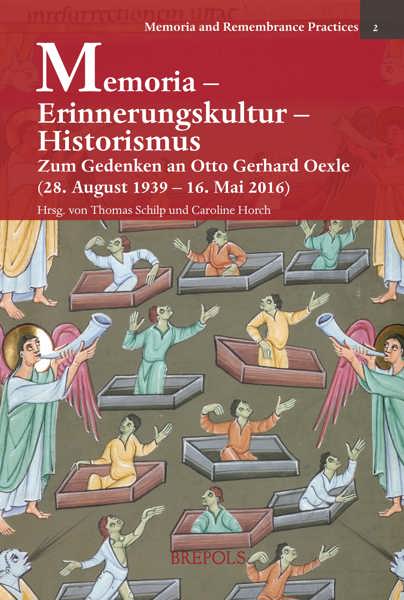
Reformations and their Impact on the Culture of Memoria
Truus van Bueren, Paul Cockerham, Caroline Horch, Martine Meuwese, Thomas Schilp (eds)
- Pages: 409 p.
- Size:178 x 254 mm
- Illustrations:151 b/w, 31 col., 2 tables b/w.
- Language(s):English, German
- Publication Year:2016
- € 120,00 EXCL. VAT RETAIL PRICE
- ISBN: 978-2-503-56854-6
- Hardback
- Available
- € 120,00 EXCL. VAT RETAIL PRICE
- ISBN: 978-2-503-56856-0
- E-book
- Available
« Cet aperçu donne une idée de la richesse de ce volume qui intéressera peut-être davantage les médiévistes que les historiens du protestantisme. » (Franck P. Lemaître, dans Istina, 2, 2017, p. 371)
“(…) the volume can be recommended to anyone interested in memoria in general. Especially those who wish to know more about how this essentially medieval phenomenon fared during and the Reformation will discover here several new and revealing insights.” (Harry Tummers, in Church Monuments, 32, 2018, p. 186)
“The essays in this thoughtfully arranged volume all reflect careful scholarship and editing.” (Phillip Haberkern, in Renaissance Quarterly, LXXII/1, 2018, p. 348)
“In short, these essays provide readers with a usefull record of the changes in memoria entailed by the Reformation. The contributors all focus heavily on material culture, particularly artworks in churches, and the book is very well illustrated, with numerous black-and-white illustrations and a section of color plates at the back of the book (in fact, the color plates duplicate black-and-white figures, a decision I found somewhat confus- ing). Art historians will accordingly find this book particularly valuable, as will historians who work with material culture.” (Thomas Farmer, in Mediaevistik, 30, 2017, p. 515)
This volume presents cultural studies approaches to different modes of memoria (the original medieval way of commemoration), taking into account specific confessional contexts. It mainly focuses on the consequences of political, religious and social reforms in the period from 1200 to 1800. Scholars from multiple subject areas in the field of cultural studies evaluate if, and to what extent, reform processes and political or social change have influenced different practices of memoria.
Since customs of commemoration of the dead (and the living) serve as a means of self-reassurance for a society, they allow significant insights into what the respective societies were grounded upon. This volume delivers the first discipline-specific and methodologically diverse approach to the consequences of different reforms on memoria.
In this way this overview creates a "history of memoria" throughout the centuries.
In der vorliegenden Publikation werden unterschiedliche Ausprägungen der memoria, des ursprünglich mittelalterlichen Gedenkwesens, kulturwissenschaftlich und konfessionsspezifisch dargestellt. Dabei stehen die Folgen politischer, religiöser und sozialer Reformen im Zeitraum von 1200 bis 1800 im Fokus. Forscher aus verschiedenen Fächern und mehrerer Länder haben sich mit unterschiedlichen Aspekten memorialen Handelns beschäftigt und untersucht, inwiefern Veränderungen und Neuordnungen die Praxis der memoria beeinflusst haben.
Im Umgang mit den Toten vergewissert sich eine Gesellschaft ihrer selbst. So vermag das Gedenken an Lebende und Verstorbene bedeutsame Aufschlüsse geben.
Den Auswirkungen unterschiedlicher Reformen, insbesondere der Reformation, auf die memoria wird hier zum ersten Mal methodisch wie fachspezifisch nachgegangen.
Aus diesem Überblick entsteht auch eine „Geschichte der memoria“ durch mehrere Jahrhunderte.
Preface. A Series on Memoria and Remembrance Practices
Introduction. Reformations and Changes in the Commemoration of the Dead
I. Memoria and Reformations in the Middle Ages
Jens Lieven
Monastische Reformen im Zeitalter des Investiturstreits und ihre Resonanz im Rhein-Maasraum. Der Liber officii Capituli des St.Viktor-Stifts Xanten (Cod. Monast. 101) und sein historischer Zeugniswert
Thomas Schilp
Memoria in einer Dorfkirche nach dem Vierten Laterankonzil (1215).
Bau und Ausstattung von St. Johann Baptist in Dortmund-Brechten (um 1250)
Frans Gooskens
Workhouses where the Living Served the Dead?
The Foundation of Apostle Houses in Europe in the Fourteenth and Fifteenth Centuries
II. Memoria and the Reformations of the Sixteenth Century (England, Germany and the Low Countries)
Paul Cockerham
Opportunity or Oppression? The Impact of the Reformation on Funeral Monuments in Cornwall
Thomas Schilp
Memoria: Kultur der Erinnerung und Vergessen. Überlegungen zur Frauengemeinschaft Clarenberg bei Dortmund-Hörde im 16. und 17. Jahrhundert
Susanne Ruf
Memoria im Luthertum? Sachzeugnisse des individuellen Totengedenkens in thüringischen Kirchen vom 16. bis zum 20. Jahrhundert
Truus van Bueren and Corinne van Dijk
The Memorial Painting which became a Text Panel. Intended and Actual Functions
Truus van Bueren and Charlotte Dikken
From Memoria to Commemoration? Stained-Glass Windows in the Netherlands before and after the Reformation
Anton Schuttelaars
Burials in Saint John’s Church, ‘s-Hertogenbosch (Thirteenth Century–1810)
Bert Timmermans
Mapping the Role of Commemorative Space in Processes of (Re)Territorialization. Elite Families and Spatialities of Enclosure in Counter-Reformation Antwerp
III. The Disappearance of Memoria
Otto Gerhard Oexle
Das Ende der Memoria
Appendix - Bibliography -Curriculae Vitae of the Authors




